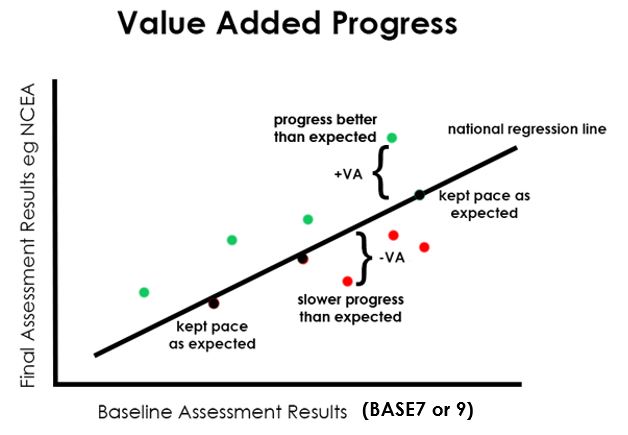Value-added assessment is a way of analysing test data that can measure teaching and learning. Starting with a baseline assessment and a large national sample, we can statistically predict the amount of growth those students are likely to make in a given year. Value-added assessment measures whether a student, subject or group kept pace, lagged behind or performed better than expected when compared with students with similar scores in the baseline assessment.
How is value-added assessment different from traditional measures of student performance?
Student performance on assessments can be measured in two very different ways, both of which are important. Achievement describes the absolute levels attained by students in their end-of-year tests. Growth, in contrast, describes the progress in test scores made over the school year.
In the past, students and schools have been ranked solely according to achievement.The publication of the annual league tables for NCEA are an example of this. The problem with this method is that achievement is highly linked to the socioeconomic status of a student's family. This should not be surprising since all the variables that contribute to high-test scores correlate strongly with family income, job status, parental education, positive attitudes about education and the capacity to expose one's children to books and travel opportunities.
In contrast, value-added assessment measures growth in student achievement and answers the question: how much value did the school staff add to the students who live in its community? To objectively comment on school performance it is important to acknowledge both summative achievement and value-added growth.


